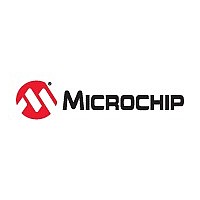PIC18F4520-I/P Microchip Technology Inc., PIC18F4520-I/P Datasheet - Page 40

PIC18F4520-I/P
Manufacturer Part Number
PIC18F4520-I/P
Description
40 Pin, 32 KB Flash, 1536 RAM, 36 I/O
Manufacturer
Microchip Technology Inc.
Datasheet
1.PIC18F4520-IP.pdf
(390 pages)
Specifications of PIC18F4520-I/P
A/d Inputs
13-Channel, 10-Bit
Comparators
2
Cpu Speed
10 MIPS
Eeprom Memory
256 Bytes
Input Output
36
Interface
I2C/SPI/USART
Memory Type
Flash
Number Of Bits
8
Package Type
40-pin PDIP
Programmable Memory
32K Bytes
Ram Size
1.5K Bytes
Speed
40 MHz
Timers
1-8-bit, 3-16-bit
Voltage, Range
2-5.5 V
Lead Free Status / Rohs Status
RoHS Compliant part
Electrostatic Device
Available stocks
Company
Part Number
Manufacturer
Quantity
Price
Company:
Part Number:
PIC18F4520-I/P
Manufacturer:
ST
Quantity:
104
Part Number:
PIC18F4520-I/P
Manufacturer:
MICROCH
Quantity:
20 000
Company:
Part Number:
PIC18F4520-I/PT
Manufacturer:
TI
Quantity:
14 300
Company:
Part Number:
PIC18F4520-I/PT
Manufacturer:
Microchip Technology
Quantity:
33 055
Company:
Part Number:
PIC18F4520-I/PT
Manufacturer:
Microchip Technology
Quantity:
10 000
Part Number:
PIC18F4520-I/PT
Manufacturer:
MICROCHIP/微芯
Quantity:
20 000
- Current page: 40 of 390
- Download datasheet (8Mb)
PIC18F2420/2520/4420/4520
3.4.1
This mode is unique among the three Low-Power Idle
modes, in that it does not disable the primary device
clock. For timing sensitive applications, this allows for
the fastest resumption of device operation with its more
accurate primary clock source, since the clock source
does not have to “warm-up” or transition from another
oscillator.
PRI_IDLE mode is entered from PRI_RUN mode by
setting the IDLEN bit and executing a SLEEP instruc-
tion. If the device is in another Run mode, set IDLEN
first, then clear the SCS bits and execute SLEEP.
Although the CPU is disabled, the peripherals continue
to be clocked from the primary clock source specified
by the FOSC3:FOSC0 configuration bits. The OSTS bit
remains set (see Figure 3-7).
When a wake event occurs, the CPU is clocked from the
primary clock source. A delay of interval T
required between the wake event and when code
execution starts. This is required to allow the CPU to
become ready to execute instructions. After the wake-
up, the OSTS bit remains set. The IDLEN and SCS bits
are not affected by the wake-up (see Figure 3-8).
3.4.2
In SEC_IDLE mode, the CPU is disabled but the
peripherals continue to be clocked from the Timer1
oscillator. This mode is entered from SEC_RUN by set-
FIGURE 3-7:
FIGURE 3-8:
DS39631A-page 38
CPU Clock
Peripheral
Program
Counter
CPU Clock
Peripheral
OSC1
Clock
Program
Counter
OSC1
Clock
PRI_IDLE MODE
SEC_IDLE MODE
Q1
Q1
TRANSITION TIMING FOR ENTRY TO IDLE MODE
TRANSITION TIMING FOR WAKE FROM IDLE TO RUN MODE
Q2
Wake Event
PC
Q3
T
CSD
Q4
CSD
Q1
is
PC + 2
PC
ting the IDLEN bit and executing a SLEEP instruction. If
the device is in another Run mode, set the IDLEN bit
first, then set the SCS1:SCS0 bits to ‘01’ and execute
SLEEP. When the clock source is switched to the
Timer1 oscillator, the primary oscillator is shut down,
the OSTS bit is cleared and the T1RUN bit is set.
When a wake event occurs, the peripherals continue to
be clocked from the Timer1 oscillator. After an interval
of T
cuting code being clocked by the Timer1 oscillator. The
IDLEN and SCS bits are not affected by the wake-up;
the Timer1 oscillator continues to run (see Figure 3-8).
Note:
CSD
following the wake event, the CPU begins exe-
The Timer1 oscillator should already be
running prior to entering SEC_IDLE mode.
If the T1OSCEN bit is not set when the
SLEEP instruction is executed, the SLEEP
instruction will be ignored and entry to
SEC_IDLE mode will not occur. If the
Timer1 oscillator is enabled but not yet
running, peripheral clocks will be delayed
until the oscillator has started. In such sit-
uations, initial oscillator operation is far
from stable and unpredictable operation
may result.
Q2
2004 Microchip Technology Inc.
Q3
Q4
Related parts for PIC18F4520-I/P
Image
Part Number
Description
Manufacturer
Datasheet
Request
R

Part Number:
Description:
Manufacturer:
Microchip Technology Inc.
Datasheet:

Part Number:
Description:
40 PIN, 32 KB FLASH, 1536 RAM, 34 I/O
Manufacturer:
Microchip Technology Inc.
Datasheet:

Part Number:
Description:
44 PIN, 32 KB FLASH, 1536 RAM, 34 I/O
Manufacturer:
Microchip Technology Inc.
Datasheet:

Part Number:
Description:
44 PIN, 32 KB FLASH, 1536 RAM, 34 I/O
Manufacturer:
Microchip Technology Inc.
Datasheet:

Part Number:
Description:
44 PIN, 32 KB FLASH, 1536 RAM, 34 I/O
Manufacturer:
Microchip Technology Inc.
Datasheet:

Part Number:
Description:
PIC18F With 128-segment LCD Driver And 12-bit ADC, 8KB Flash, 768B RAM, CCP, MSS
Manufacturer:
Microchip Technology
Datasheet:

Part Number:
Description:
PIC18F With 128-segment LCD Driver And 12-bit ADC, 16KB Flash, 768B RAM, CCP, MS
Manufacturer:
Microchip Technology
Datasheet:

Part Number:
Description:
PIC18F With 192-segment LCD Driver And 12-bit ADC, 8KB Flash, 768B RAM, CCP, MSS
Manufacturer:
Microchip Technology
Datasheet:

Part Number:
Description:
PIC18F With 192-segment LCD Driver And 12-bit ADC, 16KB Flash, 768B RAM, CCP, MS
Manufacturer:
Microchip Technology
Datasheet:

Part Number:
Description:
Microcontrollers (MCU) 48KB 3328 RAM 52 I/O
Manufacturer:
Microchip Technology
Datasheet:

Part Number:
Description:
Microcontrollers (MCU) 64KB 3328 RAM 52 I/O
Manufacturer:
Microchip Technology
Datasheet:

Part Number:
Description:
32kB Flash, 2kB RAM, 1kB EE, NanoWatt XLP, LCD 64 QFN 9x9x0.9mm T/R
Manufacturer:
Microchip Technology
Datasheet:

Part Number:
Description:
32kB Flash, 2kB RAM, 1kB EE, NanoWatt XLP, LCD 64 TQFP 10x10x1mm T/R
Manufacturer:
Microchip Technology
Datasheet:

Part Number:
Description:
128kB Flash, 4kB RAM, 1kB EE, 16MIPS, NanoWatt XLP, LCD, 5V 80 TQFP 12x12x1mm T/
Manufacturer:
Microchip Technology
Datasheet:

Part Number:
Description:
32kB Flash, 2kB RAM, 1kB EE, NanoWatt XLP, LCD 64 QFN 9x9x0.9mm TUBE
Manufacturer:
Microchip Technology
Datasheet:











